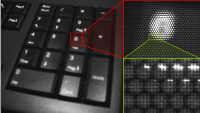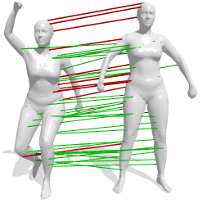La maggior parte delle nostre soluzioni si basa su risultati di ricerca raggiunti dai singoli membri della squadra o dal gruppo nel suo insieme. Rendiamo disponibili a scopo di comunicazione scientifica gli articoli di maggiore interesse tecnico. I documenti on-line elencati in questo sito sono forniti al fine di assicurare la tempestiva diffusione dei risultati dell'attività di ricerca a fini non commerciali. I diritti di copyright e ogni altro diritto connesso sono riservati agli autori e agli aventi diritto.
-

Adopting an Unconstrained Ray Model in Light-field Cameras for 3D Shape Reconstruction
Given the raising interest in light-field technology and the increasing availability of professional devices, a feasible and accurate calibration method is paramount to unleash practical applications. In this paper we propose to embrace a fully non-parametric model for the imaging and we show that it can be properly calibrated with little effort using a dense active target. This process produces a dense set of independent rays that cannot be directly used to produce a conventional image. However, they are an ideal tool for 3D reconstruction tasks, since they are highly redundant, very accurate and they cover a wide range of different baselines. The feasibility and convenience of the process and the accuracy of the obtained calibration are comprehensively evaluated through several experiments
-

Consistent Partial Matching of Shape Collections via Sparse Modeling
Recent efforts in the area of joint object matching approach the problem by taking as input a set of pairwise maps, which are then jointly optimized across the whole collection so that certain accuracy and consistency criteria are satisfied. One natural requirement is cycle-consistency—namely the fact that map composition should give the same result regardless of the path taken in the shape collection. In this paper, we introduce a novel approach to obtain consistent matches without requiring initial pairwise solutions to be given as input. We do so by optimizing a joint measure of metric distortion directly over the space of cycle-consistent maps; in order to allow for partially similar and extra-class shapes, we formulate the problem as a series of quadratic programs with sparsity-inducing constraints, making our technique a natural candidate for analysing collections with a large presence of outliers. The particular form of the problem allows us to leverage results and tools from the field of evolutionary game theory. This enables a highly efficient optimization procedure which assures accurate and provably consistent solutions in a matter of minutes in collections with hundreds of shapes.